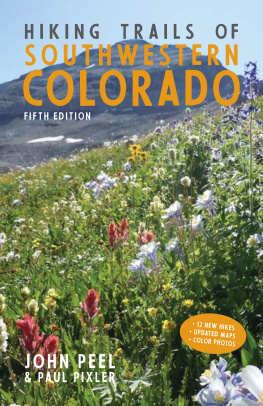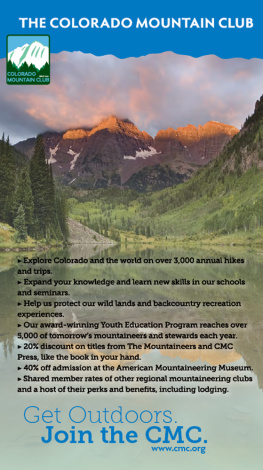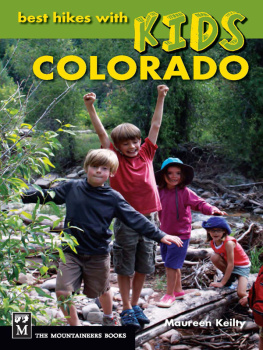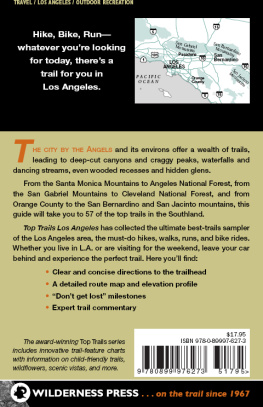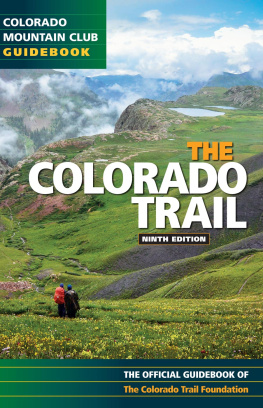
HIKING TRAILS OF
SOUTHWESTERN
COLORADO
FIFTH EDITION
JOHN PEEL
& PAUL PIXLER

2020 by John Peel
All rights reserved. No part of this book may be reproduced or transmitted in any form or by any means, electronic or mechanical, including photocopying, recording, or by any information storage and retrieval system, without written permission of the publisher.
Library of Congress
Cataloging-in-Publication Data
Names: Peel, John, author. | Pixler, Paul, 1920 author.
Title: Hiking trails of Southwestern Colorado / John Peel and Paul Pixler.
Description: Fifth edition. | Berkeley: West Margin Press, 2020. | Includes index. | Summary: A trail guidebook to hikes and climbs in Southwestern Colorado, including areas around Durango, Silverton, Missionary Ridge, and VallecitoProvided by publisher.
Identifiers: LCCN 2020004215 (print) | LCCN 2020004216 (ebook) | ISBN 9781513262963 (paperback) | ISBN 9781513262970 (hardback) | ISBN 9781513262987 (ebook)
Subjects: LCSH: HikingColoradoSan Juan National ForestGuidebooks. | HikingColoradoUncompahgre National ForestGuidebooks. | San Juan National Forest (Colo.)Guidebooks. | Uncompahgre National Forest (Colo.)Guidebooks. | Colorado Trail (Colo.)Guidebooks.
Classification: LCC GV199.42.C62 S265 2020 (print) | LCC GV199.42.C62 (ebook) |
DDC 796.5109788--dc23
LC record available at https://lccn.loc.gov/2020004215
LC ebook record available at https://lccn.loc.gov/2020004216
Printed in China
24 23 22 21 20 1 2 3 4 5
Edited by Barbara Schultz
Indexed by Sheila Ryan
Cover image: Looking up through a profusion of wildflowers to the summit of Hesperus Mountain.
West Margin Press
is an imprint of

WestMarginPress.com
Proudly distributed by
Ingram Publisher Services
WEST MARGIN PRESS
Publishing Director: Jennifer Newens
Marketing Manager: Angela Zbornik
Editor: Olivia Ngai
Design & Production:Rachel Lopez Metzger
Design Intern: Gloria Boadwee
CONTENTS
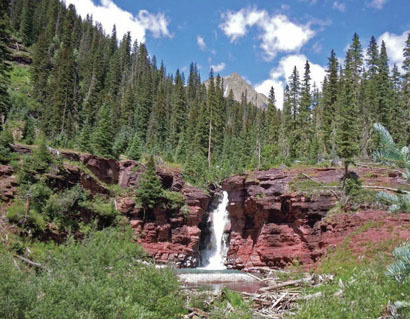
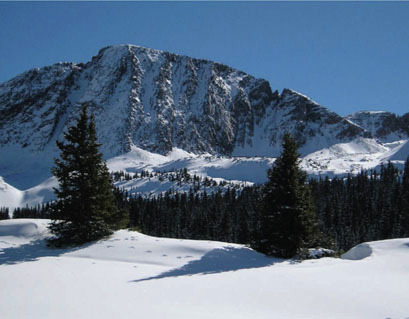
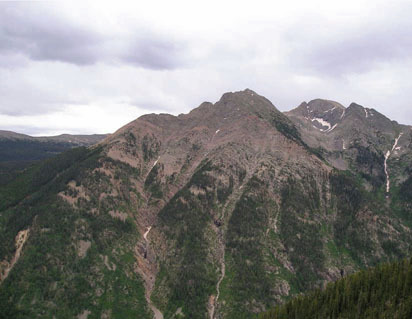
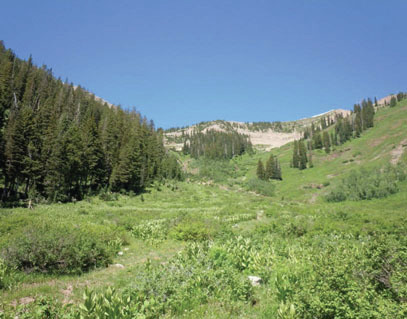

Can you find this spectacular waterfall, located near one of the hikes in this book?
PREFACE TO THE FIFTH EDITION
Welcome to what is a surprisingly hefty rewrite of this classic trail guidebook. Its been more than a decade since the fourth edition of this guide was published, and a lot has changed: Trailheads have moved; trails were built, modified, and made permanent by increased wear; roads deteriorated or were blocked off; private and public land-use restrictions were tweaked; avalanche debris forced detours; and fires altered the landscape. And thats just a start.
This edition adds a bundle of trails (including a new Vallecito section) and leaves out a few that arent all that conducive to hikers anymore. Also, several hikes and sections are reorganized, plus new photos and maps have been added that we believe are much easier to use.
This update has certainly been a labor of love. Everything in here was painstakingly researched. Yep, its a tough job wandering around in the wilderness, but someone has to do it.
The first person to create this marvelous compendium was Fort Lewis College philosophy professor Paul Pixler, whose first version came out in 1980. Paul wrote two more editions before deciding to find a successor. Through a mutual friend, Scott Graham, Paul invited me to carry on his work, and I wrote the fourth edition of this book, printed in 2006. Paul died in 2011 at the age of ninety, but a lot of his words remain in this book. This fifth edition started with me scribbling of notes in the margins of the fourth edition, but the bulk of the research was done in the summer of 2019.
There are always people who lend a hand in the creation of a guidebook such as this. Here are a few:
My father, Donald Peel, finished climbing all the states fourteeners back in 1951, and was something like the thirty-seventh person that the Colorado Mountain Club recognized for doing so. He, and to some extent my mother, introduced me and my sister, Amy, to hiking. All those Life Savers candies he used to goad me from trail stop to trail stop in those early years paid off in the end.
Eventually, I started exploring the mountains with high school buddies Steve Chapman and Jim Wadge. We all survived our scrapes (usually it was me doing something like desperately clinging to a rope while stuck horizontally on a bridge, or needing dire help from above when stuck on a cliff), and we remain friends today.
More recently, my wife, Judy, and dog, Buda, have shared my adventures. Thanks, Judy, for your constant help, guidance, and editing on this time-consuming project. Friends David Buck and Peter Schertz joined me on several trails and challenging mountains. Leo Lloyd, search and rescue expert, helped to craft some of the gear essentials, safety tips, and first-aid information. One of Leos first of countless wilderness rescues, incidentally, was catching Paul Pixler when Paul slipped on El Diente; that incident remains in the ensuing Introduction.
Thanks also to the great team at West Margin Press: editor Olivia Ngai, designer Rachel Metzger, and marketing manager Angie Zbornik. Also, thanks to Jed Botsford with the Forest Service and Joe Lewandowski with Parks and Wildlife for lending their expertise; and to Mary Monroe Brown of Durango Trails 2000 for her consultation.
So pick a trail and refresh your wilderness IQ with the information in the Introduction and Ethics chapter. Use this book as it suits you, and go try to have as much fun as I did.
John Peel
Durango, Colorado

The shale-rock ridge leading to the Engineer summit. (Photo by Steve Chapman)

The top of Pioneer Trail reaches Nusbaum Road, the junction shown here.
INTRODUCTION
Its pretty basic, really: Stuff a few things in a small pack, arrive at a trailhead, don your chosen footwear, and start walking. The goal of this book is merely to add quality to that outdoor experience. Its to help match your mood and energy with the appropriate trail. Its to keep you on the right track.
This chapter will explain how the book is structured and the best ways to use it, with an explanation of the headings before each hike description. The next chapters have general information on coexisting with other trail users, facing potential hazards, proper gear and first-aid equipment, and preparation tips.
Next page
